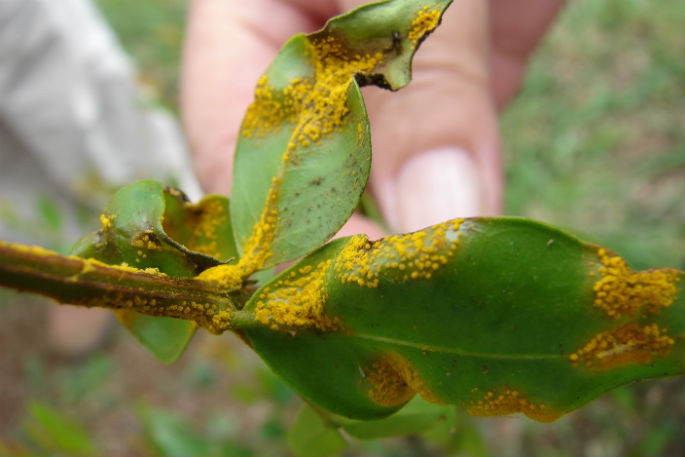The fungal disease myrtle rust has been found in two locations on the Coromandel Peninsula.
The disease attacks plants and trees in the myrtle family including pōhutukawa, rātā, mānuka, lilly pilly and feijoa.
It was first detected in Auckland in late 2017 and has recently been found in Colville and Whitianga.
The two confirmed infected properties in the Coromandel district were found by targeted surveillance conducted by Ministry for Primary Industries.
The first find was found on a private property on April 19 and the second was found on Thames Coromandel District Council land on June 8.
There were more than 20 infected plants including large and small pōhutukawa.
TCDC parks and reserves manager Derek Thompson says infected plants were found in a hedge at the TCDC office in Whitianga.
"TCDC carried out the removal of the infested plants on its site notified to us by the Ministry of Primary Industries."
MPI spokesperson Zoe Ogilvie says MPI contacted owners of the affected properties and gave them self-management packs, which set out their responsibilities under the Biosecurity Act and gives advice about maintaining their property to minimise the spread of disease.
Impacts in the Coromandel will depend on how susceptible trees were, both individually and as a species, she says.
"Overseas, myrtle rust impacts have varied widely from country to country and plant species to species.
"The full long-term impacts are still unknown at this stage. However, it is important to note that New Zealand's climate is different to the other locations where myrtle rust has established, and the level of our species' susceptibility is also different; therefore we don't know exactly how the disease will impact on different species and in different regions over the long-term in New Zealand."
If there were large-scale impacts, it could be detrimental for local ecosystems and taonga trees, she says.
"Pōhutukawa form the dominant species in the Coromandel in many places along the coast and they comprise an extremely important component of New Zealand's biodiversity and ecosystem services and functioning, such as carbon storage and erosion protection."
MPI is not actively monitoring in the Coromandel area because of the widely distributed and relatively high level of infection detected at the confirmed sites and Coromandel's proximity to areas where myrtle rust was well established, such as Auckland, Waikato and Bay of Plenty, she says.
MPI has commissioned a comprehensive research programme of more than 20 specific projects and valued at over $4.5 million. A bid for further research will be requested from government later this year.
Members of the public are advised to keep their plants in the best condition and health possible to improve their resilience and ability to cope with pests and diseases including myrtle rust.
Pruning myrtles was recommended only in late autumn and early winter to avoid encouraging new growth during warm weather when myrtle rust spores were more likely to form, and tools should be sterilised and disinfected with pure alcohol or methylated spirits.
"We recommend regular monitoring of myrtle plants for any sign of myrtle rust, particularly new, young growth, shoots and seedlings. Contact your local nursery or garden centre for specific advice in your area."
If you suspect you have seen Myrtle Rust, don't touch it and don't collect samples as this might spread the disease. If you can, take a photo of the rust and the plant it's on, then phone MPI's exotic pest and disease hotline 0800 80 99 66.



0 comments
Leave a Comment
You must be logged in to make a comment.